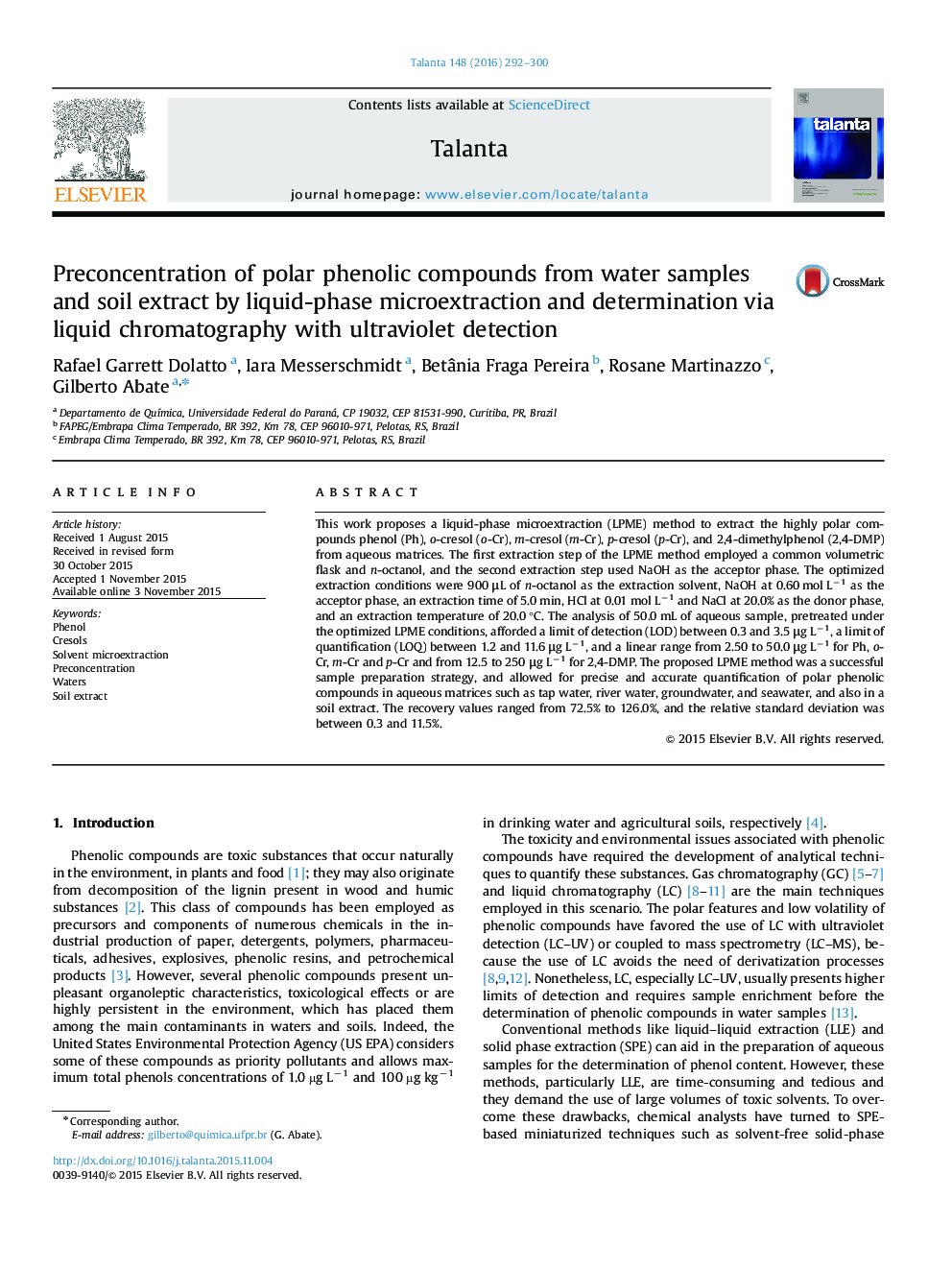| کد مقاله | کد نشریه | سال انتشار | مقاله انگلیسی | نسخه تمام متن |
|---|---|---|---|---|
| 1243787 | 1495787 | 2016 | 9 صفحه PDF | دانلود رایگان |
• A LPME technique was proposed for the extraction of the polar phenol and cresols.
• A two-stage method was performed, based on solvent and alkaline microextraction.
• Adequate performance was verified, in spite of the low log KOW values (1.46–2.40).
• A quick extraction, without clean up was reached with attractive figures of merit.
• The validation results were appropriate for different water samples and soil extract.
This work proposes a liquid-phase microextraction (LPME) method to extract the highly polar compounds phenol (Ph), o-cresol (o-Cr), m-cresol (m-Cr), p-cresol (p-Cr), and 2,4-dimethylphenol (2,4-DMP) from aqueous matrices. The first extraction step of the LPME method employed a common volumetric flask and n-octanol, and the second extraction step used NaOH as the acceptor phase. The optimized extraction conditions were 900 μL of n-octanol as the extraction solvent, NaOH at 0.60 mol L−1 as the acceptor phase, an extraction time of 5.0 min, HCl at 0.01 mol L−1 and NaCl at 20.0% as the donor phase, and an extraction temperature of 20.0 °C. The analysis of 50.0 mL of aqueous sample, pretreated under the optimized LPME conditions, afforded a limit of detection (LOD) between 0.3 and 3.5 μg L−1, a limit of quantification (LOQ) between 1.2 and 11.6 μg L−1, and a linear range from 2.50 to 50.0 μg L−1 for Ph, o-Cr, m-Cr and p-Cr and from 12.5 to 250 μg L−1 for 2,4-DMP. The proposed LPME method was a successful sample preparation strategy, and allowed for precise and accurate quantification of polar phenolic compounds in aqueous matrices such as tap water, river water, groundwater, and seawater, and also in a soil extract. The recovery values ranged from 72.5% to 126.0%, and the relative standard deviation was between 0.3 and 11.5%.
Figure optionsDownload as PowerPoint slide
Journal: Talanta - Volume 148, 1 February 2016, Pages 292–300
